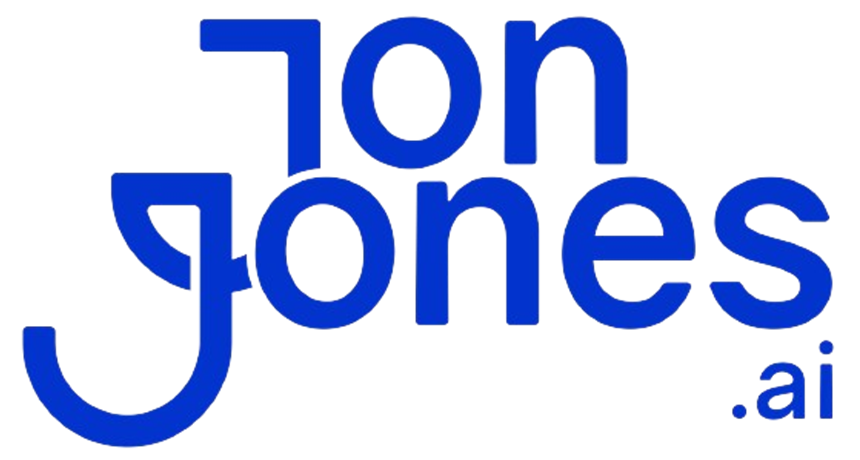Ever feel like your sales team is flying blind? Predictive lead scoring (an AI-powered method that ranks prospects by how likely they are to buy) sifts through your CRM (customer relationship management) data, behavior logs, and social media chatter to pinpoint leads who are ready to buy.
With budgets tight and sales goals looming, guesswork isn’t just a pain – it’s a risk.
In this post, we’ll show you five ways predictive lead scoring can boost your ROI. You’ll lift your conversion rates, cut wasted effort, and keep your pipeline full of high-value leads.
5 Predictive Lead Scoring with AI Boosts ROI

Ever feel like you’re guessing at which leads matter? With predictive lead scoring (using AI to rank prospects) we sort through your CRM (customer relationship management system), behavior logs, social chatter, and IoT (Internet of Things) data to find the ones ready to buy. Budgets are tight and performance pressure is on, so you need predictive analytics in marketing that catches signals we’d otherwise miss.
Machine learning (an algorithm that finds hidden patterns) looks at leads that closed deals versus those that stalled. That cuts out guesswork. You can pick a CRM-native tool for a fast setup or go with a standalone platform if you want extra data sources and advanced features quicker, you might pay more, though.
Nice.
Next, check out how this moves the needle:
- You’ll boost conversions: AI-driven scores shine a light on leads most likely to buy.
- You’ll save time: reps spend less chasing low-value contacts and more on hot deals.
- You’ll sharpen your pitch: messages drop into the inboxes of ready-to-buy prospects, not casual browsers.
- You’ll scale smarter: models update as buyer signals shift, keeping your lead ranks accurate.
- You’ll stay flexible: choose a built-in CRM score for smooth setup or a standalone system for early access to new features.
Every rep gets a clear next step with AI-powered lead scoring. You’ll watch conversion rates climb and sales cycles shrink. Meanwhile, your team spends more time coaching and less time chasing dead ends. And because the model updates itself, your lead list stays fresh, you never lose track when buyer behavior shifts.
Key Data Inputs for Machine Learning Lead Scoring

Machine learning (ML) lead scoring is a way to use AI to rank your prospects by blending data from different channels. We pull in:
- CRM (customer relationship management) records
- Website behavior like time on site and pages viewed
- Email interactions such as opens, clicks, and replies
- Purchase history
- Third-party intent data (signals someone’s researching a solution)
- Social media streams
- IoT (Internet of Things) signals
- Support interactions from chat and ticket logs
When you weave these inputs together, you’ll spot patterns you’d miss if you focused on just one channel.
Keeping your data clean is key. Start by standardizing formats like dates, country codes, and industry labels, and remove duplicate or stale entries before they skew your scores. Then automate your data flow with pipelines or API connectors (application programming interfaces) that sync CRM, marketing tools, web analytics, social platforms, and help desk logs on a set schedule.
Next, run routine audits to catch any gaps or odd spikes. We write simple scripts that turn raw events into consistent fields across all sources. With these steps, your scoring model stays sharp, accurate, and ready to point you straight to your hottest leads.
Designing & Evaluating Algorithms in AI-Based Lead Qualification

When you’re scoring leads, we focus on four key factors: predictive power, interpretability, data needs, and training speed. Predictive power shows how likely a model will guess right. Interpretability means you can follow its reasoning. Data needs and training speed help match the model to your data volume and deadlines.
Next, we choose between supervised learning (training on wins and losses you’ve labeled) and unsupervised learning (letting the model find hidden patterns). And we lean on ensemble learning (combining several models) to boost accuracy by mixing their strengths.
| Algorithm | Strengths | Weaknesses | Best Use Case |
|---|---|---|---|
| Logistic Regression | Simple, clear coefficients | Struggles with complex trends | Small datasets where features matter |
| Decision Trees | Easy to visualize decisions | Can overfit without pruning | Fast prototyping and rule-based scoring |
| Random Forest | Handles noisy data well | Harder to interpret than single trees | Medium datasets needing stable scores |
| Gradient Boosting | High predictive accuracy | Slow training and needs tuning | Large datasets with many features |
Ensemble methods like random forest and gradient boosting often outscore single-model approaches, but they hide how each input shapes the final score. If you need clear rules, logistic regression or decision trees deliver transparency when stakeholders ask “Why?”. Got it. Neural networks (an algorithm that mimics brain connections) can find deep patterns but act like a black box. So here’s the trade-off: pick a simpler model when buy-in matters, and tap into ensembles or neural nets when raw performance drives your revenue.
Implementing Predictive Lead Scoring Software & CRM Integration

First, we clean up your CRM (customer relationship management system) data, scrub out duplicates, fix missing fields, and organize contacts. Then we help you pick a predictive lead scoring (algorithm that ranks leads by their likelihood to buy) tool. Finally, we work with you to define clear scoring rules, like extra points for an email click or a pricing page visit.
Next, we link your scoring tool to both your marketing automation and your CRM. We’ll run sample scores on a batch of leads to make sure the model feels right. Once that checks out, we set up an automated pipeline to refresh scores daily so you always know which leads to call.
Choosing your tool is all about balance:
- Built-in CRM apps (Salesforce Einstein, HubSpot) plug right in for a quick, cost-effective setup.
- Standalone platforms (Infer, 6sense) pull in more data and let you customize deeper, but they need extra setup time and extra licenses.
After you lock in your tool, we map your key data fields (industry, company size, email behavior) and configure scoring triggers. We’ll loop in your sales reps to agree on score thresholds, so the AI model matches real selling. We also automate regular checks for duplicates and stale entries.
Every three to six months, marketing and sales get together for a quick workshop. You’ll review performance metrics, tweak the rules, and plan next steps. This keeps your scores sharp and your reps focused on the hottest deals.
Bonus tip: schedule automated data hygiene audits and keep that feedback loop open with sales. That way, your scoring rules stay aligned with real deal outcomes.
Measuring ROI & Metrics in Predictive Pipeline Management

Without clear KPIs (key performance indicators), your predictive model (an algorithm that forecasts outcomes) is just numbers. We track scoring accuracy metrics to show you where your AI shines and where it needs a tune-up.
Our focus:
- High-score lead conversion rate
- Average lead score by source
- Sales cycle length reduction
- Lead-to-customer ratio
- Revenue uplift per scored lead
These figures turn your scoring into a living guide, not a dusty report.
When you calculate ROI (return on investment) for your lead scoring system, start by adding the extra revenue from leads above your threshold and subtracting setup, license, and maintenance costs. For example, if high-score leads bring in an extra $50,000 this quarter and you spent $5,000 on your scoring tool, you’ve hit a 10-to-1 return. Nice.
Next, run an A/B test (a split test) on your scoring cutoffs. Split your list into two groups – one with a 70-point cutoff and one with an 80-point cutoff. Then track which group closes more deals.
Then use lead conversion forecasting (predicting which leads will convert) to see if a higher cutoff pays off next quarter.
Set up a CRM dashboard that refreshes those key metrics every week, like high-score lead conversion rate and average score by source. Then meet with sales each month to catch any dips.
You can even layer in cost per lead and lifetime value to deepen your ROI analysis.
With these steps in place, your predictive pipeline management stays nimble. You’ll spot shifting buyer habits fast, adjust your cutoffs, and keep returns climbing.
Best Practices & Pitfalls for Adaptive AI Lead Scoring Models

We folded version-control best practices into the "Implementing Predictive Lead Scoring Software & CRM Integration" section. This means we track updates and roll back changes when needed. Predictive lead scoring software (an algorithm that ranks prospects by their deal likelihood) and your CRM now come with built-in safeguards.
Then we wove GDPR governance (rules on data protection), privacy-logging (tracking who views what), and a clear change-management plan into our "Measuring ROI & Metrics" chapter. That helps you stay compliant and avoids redundant retraining schedules, feedback loops, and workshop reminders.
Final Words
In the action, we kicked off with the core mechanics of AI-powered lead scoring and saw how it is reshaping sales prioritization.
We walked through key data inputs, from CRM records to web behavior. Then, we compared modeling approaches and shared tips for choosing tools, integrating with your CRM, and measuring ROI.
We highlighted retraining models, aligning sales feedback, and guarding data quality.
Results matter.
With predictive lead scoring with AI driving every step, your pipeline just got a whole lot smarter and more efficient.
FAQ
What is an example of predictive lead scoring with AI?
A predictive lead scoring example has AI sift through CRM records, web visits, and email interactions to flag leads with a score above 80, letting your sales team chase hottest prospects first.
How does AI lead scoring work in HubSpot?
AI lead scoring in HubSpot uses machine learning (algorithms that learn from data) to blend CRM records, email clicks, and site visits into a priority score.
What is predictive lead scoring software?
Predictive lead scoring software applies AI to score prospects based on CRM interactions, web behavior, and external data, helping you focus on leads with the highest chance of closing deals.
How does predictive lead scoring work in Microsoft Dynamics 365?
Predictive lead scoring in Dynamics 365 taps AI to analyze sales activities, email responses, and third-party intent data into a single score so you can target the most promising opportunities.
What is Einstein Lead Scoring in Salesforce?
Einstein Lead Scoring in Salesforce uses machine learning to examine CRM data and past conversion traits, then provides a lead score between 0–100 so you can zero in on top prospects.
How does Data Cloud lead scoring help sales teams?
Data Cloud lead scoring unites CRM, web analytics, and IoT signals in one platform to generate AI-driven lead scores, so you’ll spot high-value contacts at a glance.
How do lead and opportunity scoring differ in Salesforce?
Lead and opportunity scoring in Salesforce both use AI, but lead scoring gauges early-stage interest, while opportunity scoring tracks deal-stage signals and engagement to refine your follow-up timing.






